Basic soaring program introduces cadets to airmanship
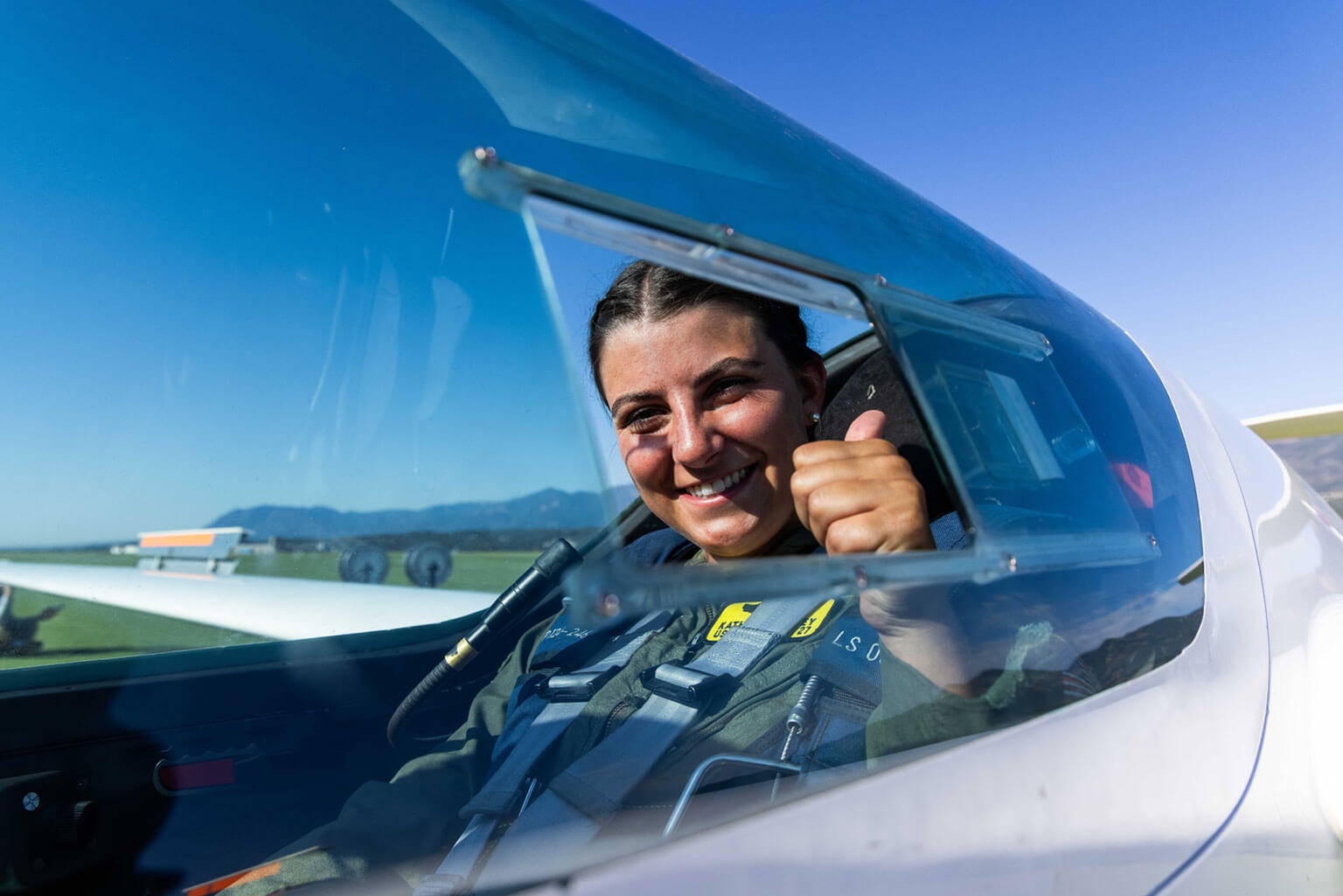
Cadet 2nd Class Katherine Daley is prepared for takeoff in a TG-16 glider at Davis Airfield, U.S. Air Force Academy, Colo., July 8, 2025. Daley went through the basic soaring program before her sophomore year. Now, as a soaring instructor, she is responsible for exposing cadets to military aviation. (U.S. Air Force photo by Trevor Cokley)
By Harry Lundy
U.S. Air Force Academy Strategic Communications
U.S. AIR FORCE ACADEMY, Colo. – At the U.S. Air Force Academy, cadets are exposed to aviation, learn the fundamentals of flight and develop airmindedness. Through the world’s largest glider operation, with more than 15,000 sorties a year, they gain mentorship and insight into aviation careers.
The summer basic soaring program, Airmanship 251, is designed for rising sophomores and forms a core part of the Academy experience. The course includes a minimum of 10 flights in a glider. During these flights, cadets learn basic operations. Cadets can continue training to pilot a glider solo and go through a year-long program to become an instructor pilot.
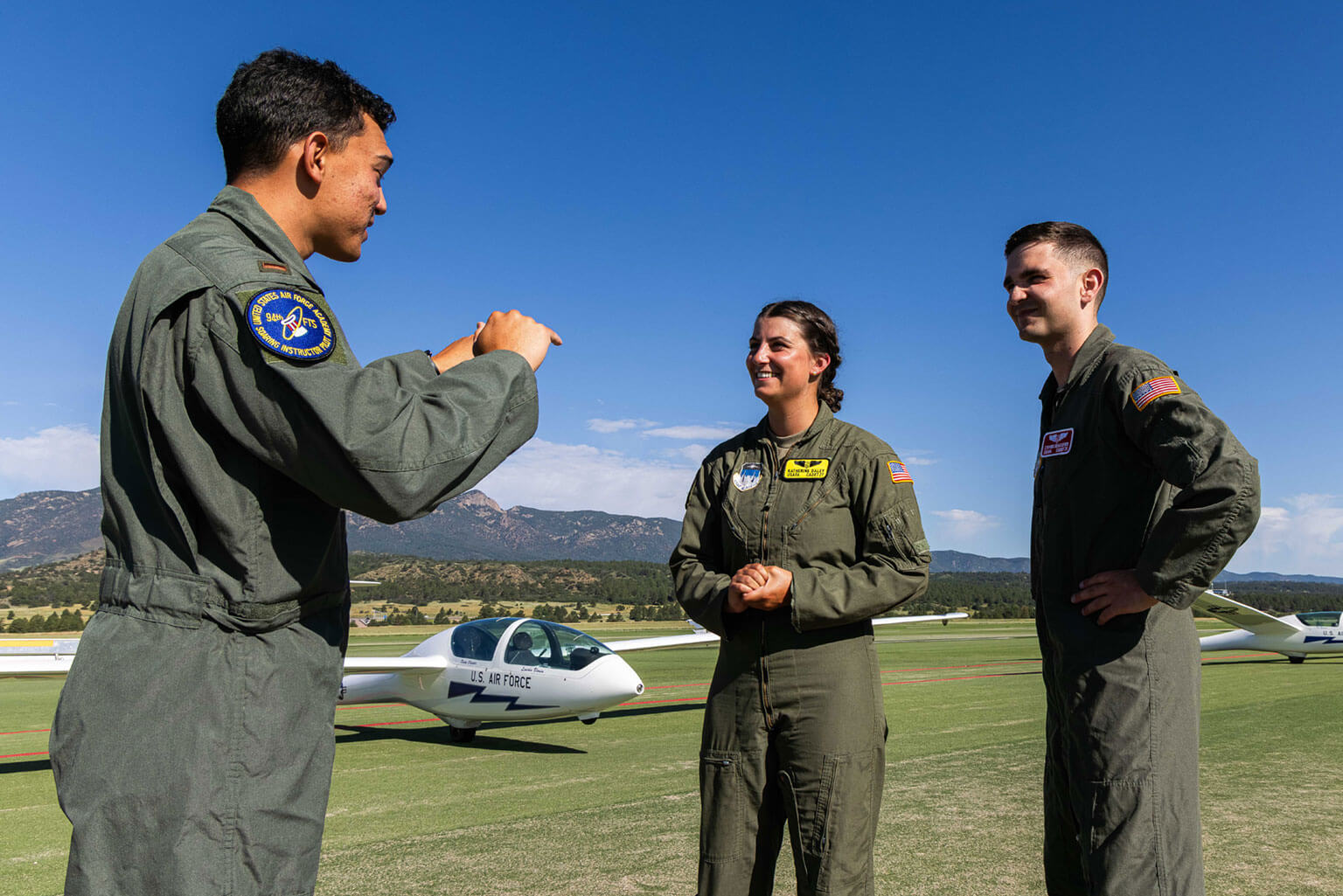
Cadet 2nd Class Katherine Daley, center, and Cadet 1st Class Steven Newcomer, right, receive information from 2nd Lt Joshua Richards about a runway change, Davis Airfield, U.S. Air Force Academy, Colo., July 8, 2025. Daley and Newcomer are instructor pilots in the basic soaring program, Airmanship 251. (U.S. Air Force photo by Trevor Cokley)
Introduction to flying
The basic soaring program flies about 2,000 sorties each summer period. Cadet 2nd Class Katherine Daley, a cadet soaring instructor and political science major, is hoping to attend pilot training after graduation. She notes the program is more than learning aircraft controls, the importance of following a checklist and how to fly patterns.
“It provides an awesome opportunity to learn more about yourself,” said Daley. “After my first flight, it was really moving and made me feel like this is something I definitely want to pursue.”
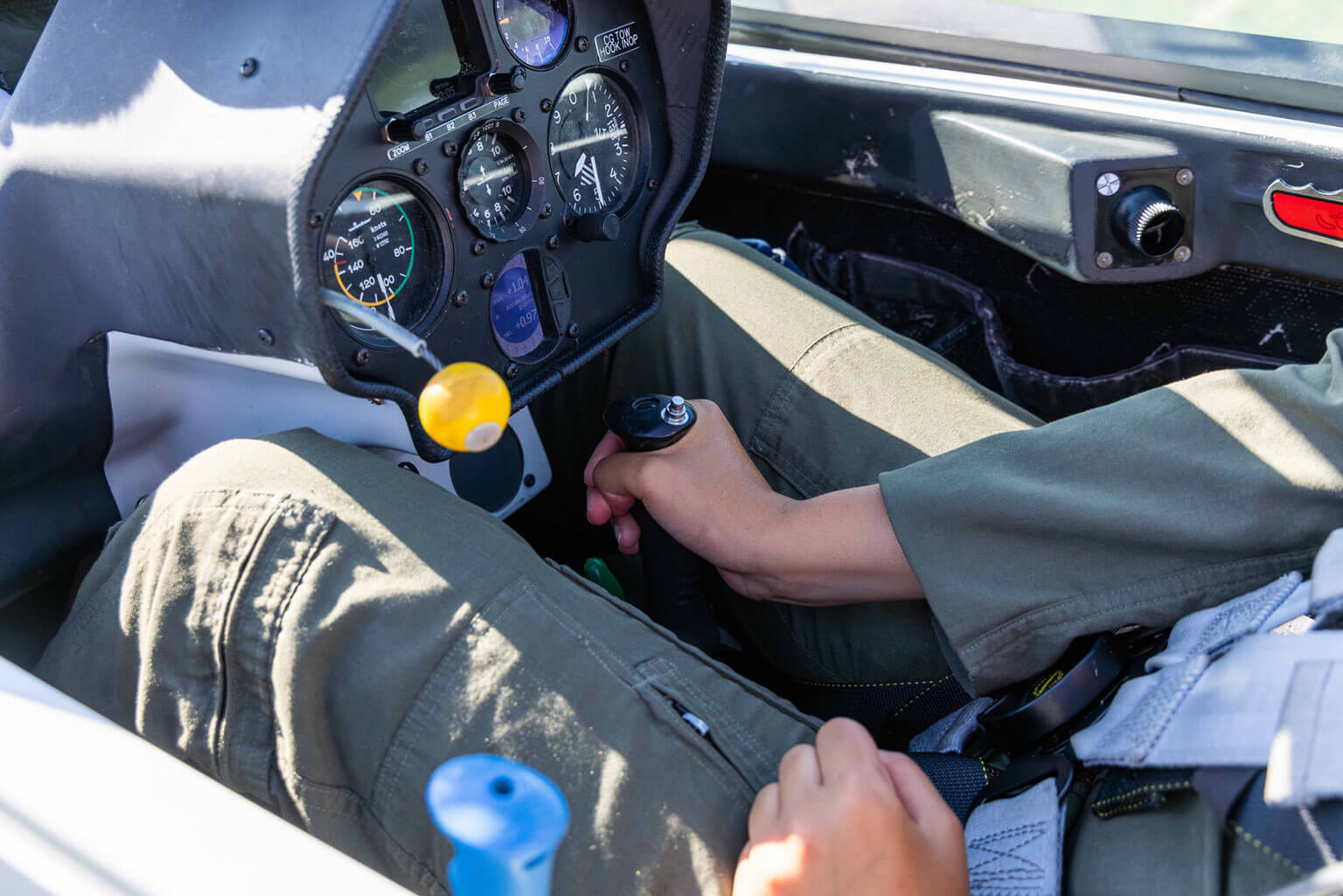
Soaring instructor Cadet 2nd Class Katherine Daley checks the glider controls before launch, Davis Airfield, U.S. Air Force Academy, Colo., July 8, 2025. Daley teaches cadets aircraft controls, the importance of following a checklist and how to fly patterns. (U.S. Air Force photo by Trevor Cokley)
Cadet-led upgrade training
Hands-on soaring training instills the warrior ethos in future leaders and develops airmindedness. Cadets learn and understand the influence of air power for strategic advantage by learning the real-life application of aviation principles. Being ready to lead on day one includes knowing how to control airspace to achieve military goals.
Cadets can continue training in Airmanship 251 to pilot a glider solo. Afterwards, they are eligible for a year-long upgrade program to become an instructor. Cadets conduct approximately 95% of all glider flight instruction at the Academy.
“Soaring has been the most transformational leadership opportunity,” said Daley. “We’re all teaching other cadets, helping them get to solo, helping them get up in this world.”
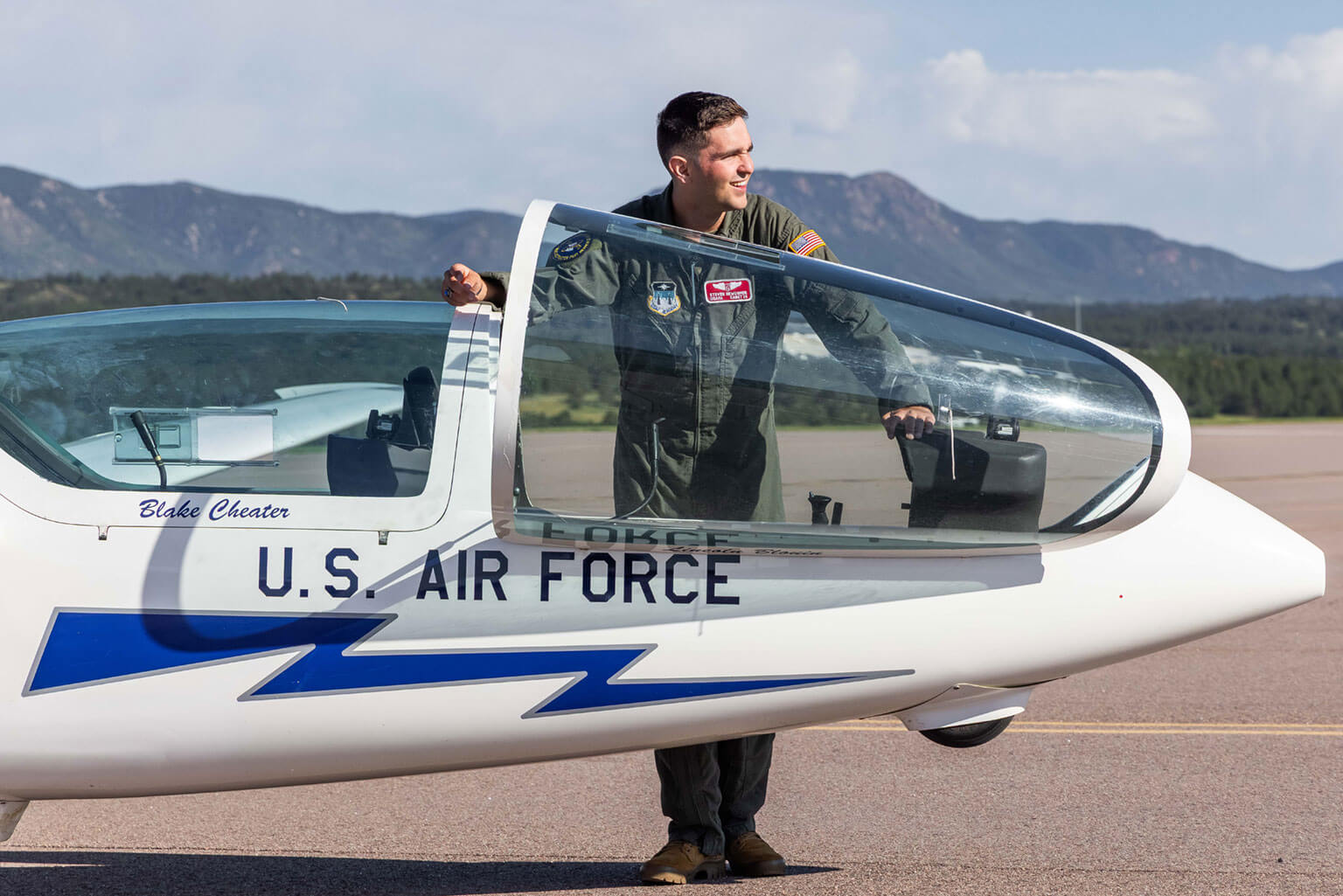
Cadet 1st Class Steven Newcomer, cadet squadron commander for the basic soaring program, prepares a glider for launch, Davis Airfield, U.S. Air Force Academy, Colo., July 8, 2025. Newcomer has instructed more than 100 cadets in the program. (U.S. Air Force photo by Trevor Cokley)
The importance of upholding standards
Tactics, techniques and procedures are vital to aviation safety. Like weekday formations, flight standards build muscle memory among cadets who, as supervisors, check on their subordinates daily.
“I think that a flying squadron is the most real place that standards exist,” said Cadet 1st Class Steven Newcomer, cadet squadron commander for the 94th Flying Training Squadron and military and strategic studies major. “If we do not have our manuals and standards committed to memory, people can get hurt and we can damage aircraft.”
As a squadron commander, Newcomer helps generate 1,500 sorties in a three-week summer period. He said this experience provides a unique level of leadership.
“Down here, we see why the small details matter and why we need to have exceptional attention to detail,” said Newcomer. “What we do impacts people’s lives.”
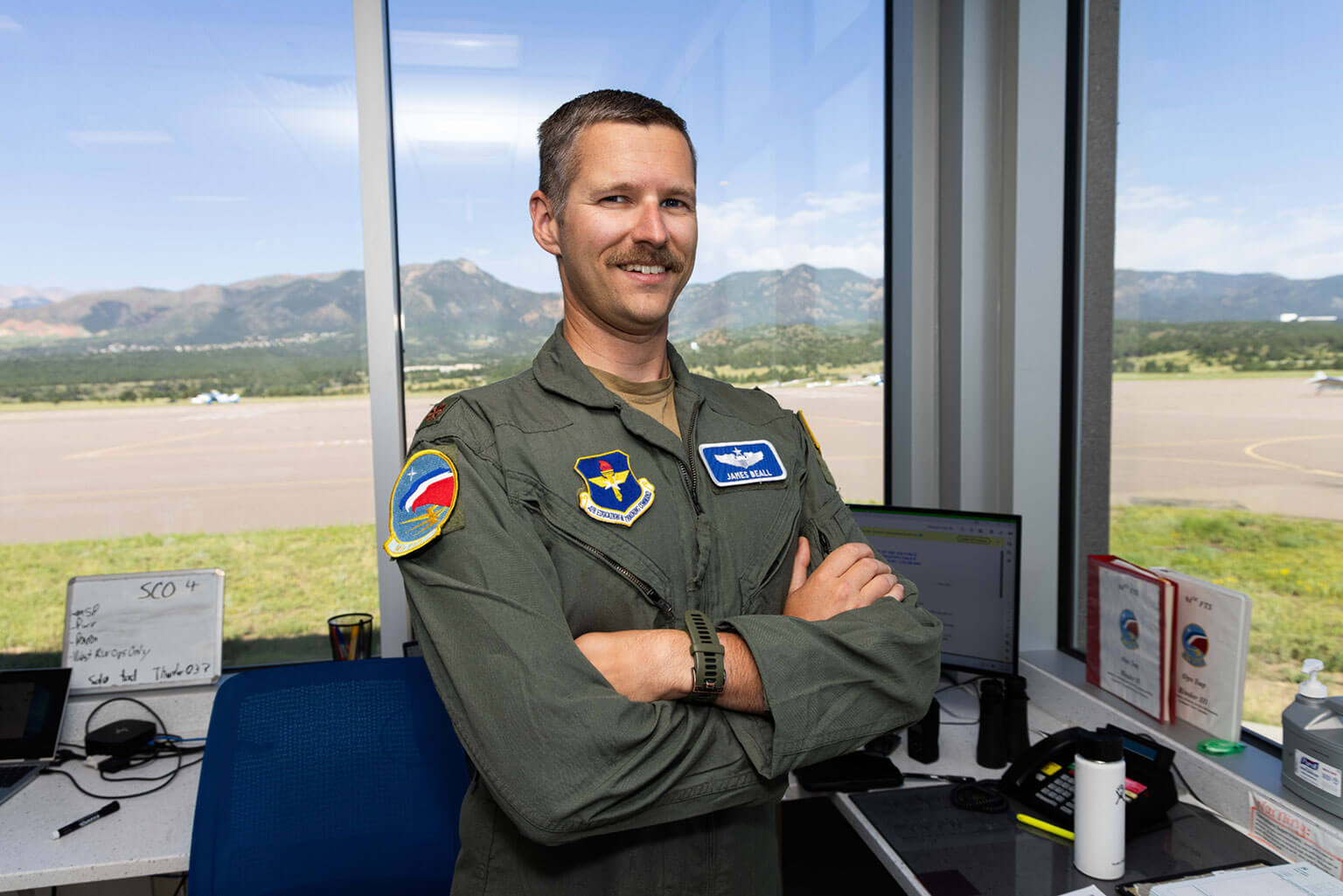
U.S. Air Force Maj. James Bell is pictured at Airfield Ops, Davis Airfield, U.S. Air Force Academy, Colo., July 8, 2025. As an assistant director of operations, Bell shares his real-world experience with cadets in the basic soaring program. (U.S. Air Force photo by Trevor Cokley)
Officer mentorship
Mentorship is an essential part of professional development. Cadets going through the basic soaring program interact with officers from rated career fields who share their career experiences. Additionally, cadets learn about various military aircraft.
“We give cadets the time and space to make decisions in this program,” said Maj. James Bell, an assistant director of operations. “Daily, we provide a bit of the bigger picture, to think of other ways of doing things and expanding their airmanship through our experiences.
Learn more about the airmanship programs. See more photos of cadets Daley and Newcomer on Flickr.